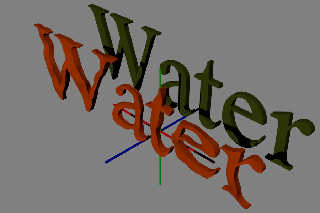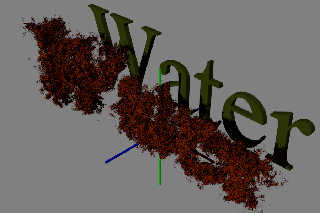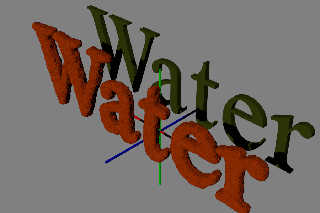The three attached images were created using two new patterns called
hard_object and soft_object. They can be found in the patch branch off
master (3.7.2) at:
https://github.com/wfpokorny/povray/tree/feature/soft_objectAndhard_objectPatterns
Associated demo scenes can be found in the scenes/textures/patterns
directory of the branch. Both new patterns are aimed first at making the
object to isosurface-object path easier. However, both work as pure
patterns too with gradual 0 to 1 value changes from the object surface
inward.
The hard_object pattern is a more complete implementation of the
ObjectAsIso idea I was playing with - mostly in SDL - back in 2008 or
2009. Hard because the method replicates an input object's sharp features.
The soft_object pattern is based upon a subset of the density file
pattern updates and ideas I was playing with last year. See:
http://wiki.povray.org/content/User:Wfpokorny/DensityFile. Soft because
the method uses exponential blobbing. In this implementation a virtual
"df3 grid" is created on the fly.
The essential sdl for hard_object looks like:
#declare FnHardObj = function {
pattern { hard_object { ObjectText }
radius 0.08
recursion_limit 10
samples 22
warp { turbulence VarTurb octaves 3 lambda 3 }
}
}
and for soft_object it looks like :
#declare FnSoftObj = function {
pattern { soft_object { ObjectText }
spacing 0.009
strength 1.00
warp { turbulence VarTurb lambda 5 }
}
}
If you'd like to give these patterns a try, feel free to grab the branch
off github. I'm still seeing what they can do - and not do - myself.
Bill P.
Further notes.
---------------
- Both patterns are sampling based.
- The hard_object demo uses one text object ("Water") for simplicity.
The soft_object demo is made faster making each letter was its own
isosurface due bounding and inside object test efficiency. Both methods
are sensitive to how quickly the inside object tests can be done.
- Objects used must have a defined inside.
- Further documentation on the options can be found in the associated
git commit messages.
- If using as a pattern the soft_object is often faster than hard_object
for a smooth result. The reverse tends to be true if using the patterns
in an isosurface.
- When using hard_object in a pattern low recursion_limit values and
high samples are usually best. If using the hard_object pattern in an
isosurface low samples and higher recursion tends to be better.
- The hard_object method works exceptionally well with convex,
outwardly-pointy object features. The method struggles with concave,
inward-crevasse portions of the object - though where samples high
enough the distance from surface measure is decent. As the spherical
sampling moves further inside the original object fewer and fewer of the
spherical samples are usable in estimating the distance within - and
results get noisy. Such noisiness is both shown and used for effect in
this TinaCHeP image:
http://www.tc-rtc.co.uk/imagenewdisplay/stills/754/10.html
- Aggressive AA settings in combination with these patterns should be
avoided until final renders. The relative slowness of the patterns
compounds with AA.
Post a reply to this message
Attachments:
Download 'hard_object.jpg' (65 KB)
Download 'hard_objecta.jpg' (129 KB)
Download 'soft_object.jpg' (81 KB)
Preview of image 'hard_object.jpg'

Preview of image 'hard_objecta.jpg'

Preview of image 'soft_object.jpg'

|




![]()